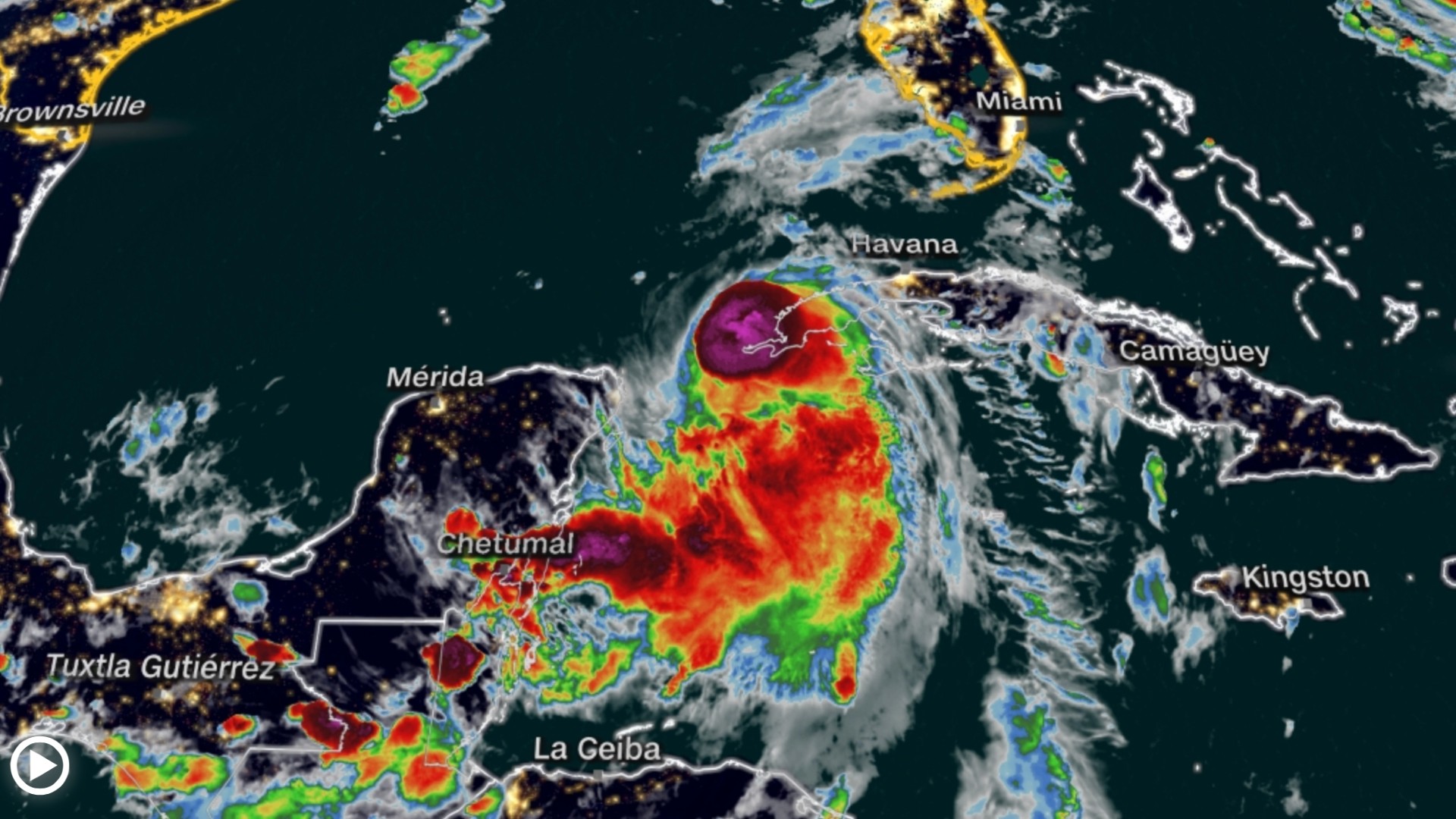Italia May Intensify Quickly in Warmer Than Ever Gulf of Mexico: What Does That Mean?
The forecast for Italia is grim: rapid intensification is expected as it moves into the Gulf of Mexico and some of the planet’s warmest waters before making landfall in Florida this week.
If so, it will join a growing list of devastating hurricanes, such as Hurricane Ian, which tore up the Florida coast and killed more than 100 people, that have rapidly intensified before making landfall.
Italia poses a “significant risk” on its journey through the Gulf of Mexico, the National Hurricane Center warned Monday.
Water temperatures around South Florida reached 37.7°C in some areas this summer, and temperatures in the Gulf Records have been brokenWith enough heat to rapidly strengthen the tropical system.
Ocean temperatures “are 1 to 2 degrees Celsius above normal for this time of year, which is a lot when you consider that this is the hottest time of the year,” Brian McNoldy, an atmospheric scientist at the University of Miami, told CNN. . “With that warm water ahead, the potential for rapid intensification is high.”
Quick intensity is now “high”.
Rapid intensification is just what it sounds like: when a storm’s winds develop rapidly over a short period of time. Scientists define wind speed as an increase of at least 56 km/h in 24 hours or less.
Unfortunately, this phenomenon is happening more and more as storms move closer to land, making it harder for people to prepare for them. Therefore, they are very dangerous for those expecting a weak storm.
That’s one way experts say the weather crisis makes hurricanes more dangerous, allowing warmer water storms to strengthen more quickly. Also, according to the National Office of the National Oceanic and Atmospheric Administration (NOAA). 90% global warming This has occurred in the oceans over the past 50 years.
Until recently, rapidly intensifying storms were few and far between. Historically, tropical storms took several days to develop into powerful hurricanes, but with human-caused climate change, rapid intensification is becoming more common, said Alison Wing, associate professor of atmospheric sciences at Florida State University.
Hurricane Franklin in the Atlantic Ocean recorded two episodes of rapid intensification between this Sunday and Monday morning, when it went from being a Category 1 hurricane with winds of 145 km/h to a Category 4 hurricane with winds of 233 km/h.
“There has been a rapid increase in the frequency of cases in recent years,” Wing told CNN.
“Although each storm has a unique set of circumstances, climate change is increasing the number of strong hurricanes that are rapidly intensifying.”
Read more here.



:max_bytes(150000):strip_icc()/WilliamLevy-9d1412ad3c01443498e58ed956f6242c.jpg)

